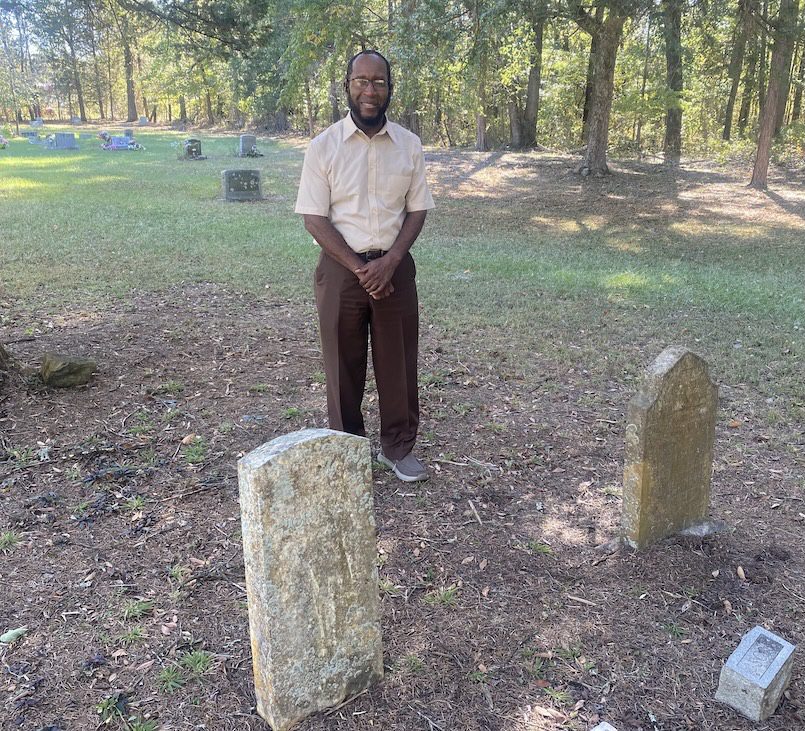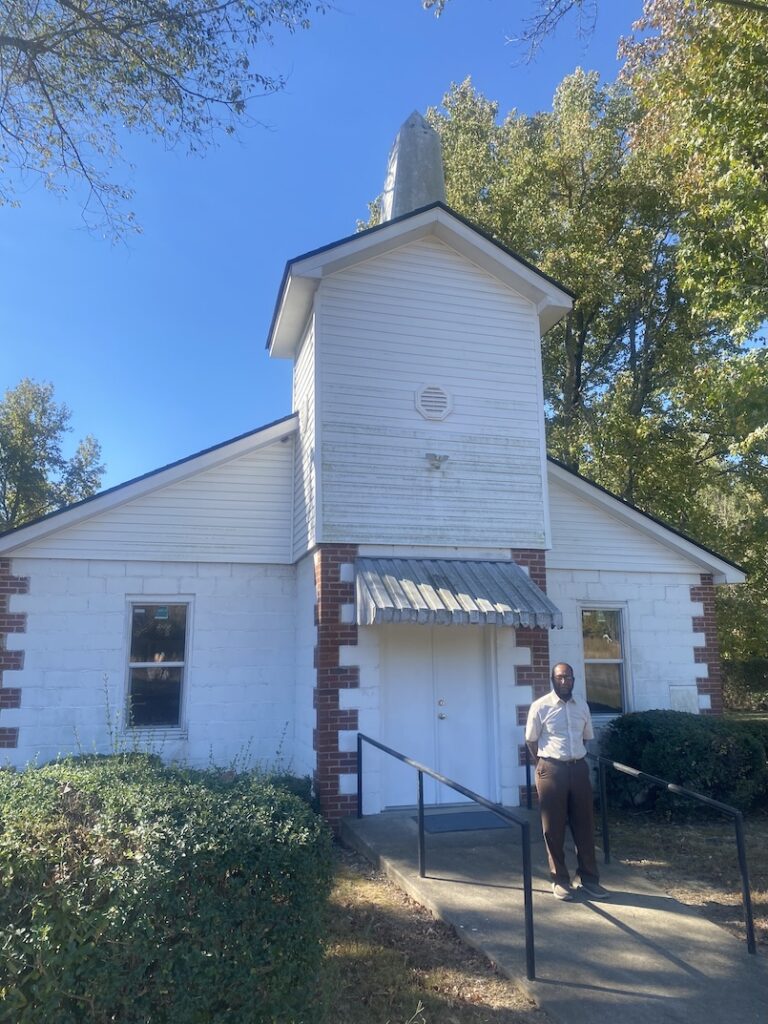05 Dec 2024 Meet me in Menifee
By Stefanie Brazile
For those of you who like to veer off the interstate and drive the highways of yesteryear, I encourage you to take Highway 64 out of Conway and head towards Morrilton. About 10 minutes into your drive, you’ll pass from Faulkner County into Conway County, and through a small town named Menifee.

The city of nearly 300 people doesn’t have a gas station or a grocery store, but there is a rich history that lives there in the hearts and minds of its residents. Leaders are working to educate younger adults about a time when Menifee was the center of education for Black youth in the county. And as you turn back the pages of history, you find Menifee’s roots began at Jamison Station, which is located a half mile west of what natives refer to as “Old Menifee.” Jamison Station was established at the river crossing known as Menifee Ferry.
I was fortunate to hear about the town’s history on an October morning when Mayor Terry Coleman gave me a tour of the town he was raised in and is proud to serve. “I want people to know that we have a rich history, and that we do care about what goes on here,” he said. Coleman is in his second year as mayor after serving on the city council for two decades. He has several goals in mind during his administration.

As mayor, he wants the community’s history to be documented and taught. He also wants to host annual events to bring citizens together to rebuild a sense of community that he believes has been gone for 40 years. To that end, Coleman appointed a History Commission, with Menifee native Dr. Alice Hines as chair.
On Aug. 27, Hines and other History Commission members started on the mayor’s mission. They met with more than 50 community members in the multi-purpose room at City Hall to present “Reaching for Dignity Through Education.” The interactive session took attendees back to 1872, after Emancipation, when Jamison Station was founded.
“You have to understand what Emancipation meant to people,” Hines said. “Black people settled and founded this town as early as 1872, and it was later folded into Menifee. Jamison Station was settled because these people wanted to come into an area where they could be safe and have control over their lives.”

Over time, the women of Jamison Station pressured their husbands to build one-room, log cabin schools around the community, and three were constructed. Later, the schools were centralized onto the property where City Hall and the gym stand, just off Highway 64.
“At one time, Menifee had more than 500 people, a train station and the first post office in the state with an African American postmaster,” Coleman said.
Those three schools went through two movements. The first was in 1919, when parents from the region consolidated nine Black schools from communities in the county, according to a history published in 1982 by Estelle Mitchell Spearman. They became East Side School District Number Five, and students were bused to the large campus where seven buildings stood, including the gym and homes on the property where instructors lived.

On Aug. 27, 1965, Menifee was incorporated as a town. Old Menifee had multiple churches, an ice cream parlor, a movie theater, Stell’s Grocery, Mitchell’s Grocery and a gas station according to Coleman, who took me to the sites where the businesses operated.
We also visited the city park and the Menifee Community Cemetery, where Buffalo soldier Issac Johnson, who served in WWI, was buried in 1953.
Hines was the perfect appointee to head the History Commission, which will play a role in planning the birthday event. She taught English and Fine Arts at Hendrix College for 36 years, retiring in 2017 as the C. Louis and Charlotte Cabe Distinguished Professor Emerita of English.
“Education was so important to the founders,” Hines said. “We believe in the significance of education and are proud of who we are and our ancestors. We have no issue identifying them and the contributions they made to sustain this place, and we plan to sustain it. Also, we are intentional in reclaiming and honoring our history.”

Part of that history includes a devastating tornado that destroyed five of seven buildings on the school campus in May 1960. Only the gym and the high school remained, and Hines recalls several people dying from injuries. Because of the destruction, more homes and businesses were built along Highway 64.
Another event that changed the course of Menifee occurred in 1979. Because of desegregation and a lawsuit, a Federal District Court ordered that Morrilton, Plumerville, and Menifee school districts merge to form the South Conway County School District. Coleman said that no one thought of it at the time, but it decentralized the community. “Through this 40-year absence [of a local school], we have not been brought together. This is a great community and when a tragedy happens, they come together. But I want to bring them together each year and expose them to our history.”
Hines, Coleman and other Menifee natives are working to remind people that Menifee has a rich history that deserves to be celebrated. I encourage you to veer off I-40, lighten up on the accelerator and take 64 to or from Morrilton. As you pass through Menifee, imagine the hustle and bustle of a thriving community that was the center of educating Black youth for more than a century. Imagine families and friends celebrating birthdays, Christmases and milestones and then remember—they still are.










